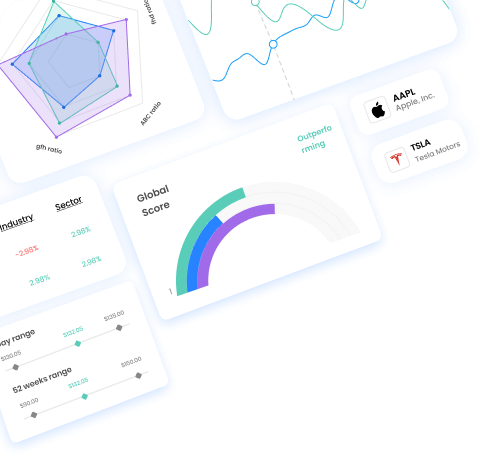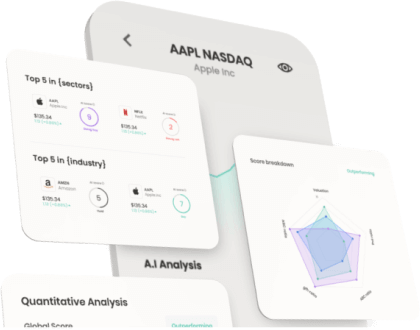
Factor Investing 101 – Learn About This Investment Approach
Factor investing involves investing in securities that feature certain characteristics that have been proven to deliver higher risk-adjusted returns than the market over the course of time, while following a fixed set of rules. In other words, factor investing is based on the systematic exploitation of a number of premiums, called factor premiums, that have shown to be robust over time and across different markets.
An example of this is the value factor: securities that are attractively priced in relation to their fundamental value. Stocks exhibiting a low book-to-price ratio, tend to perform well in the long run.
Here’s all you need to know about factor investing:
What is factor investing?
Factor investing is an investment approach that targets specific return drivers over multiple asset classes. Macroeconomic and style are the two chief factor types. Benefits of factor investing include enhanced diversification, improved portfolio outcomes and reduced volatility.
Factor premiums have been extensively documented in academic literature for over four decades. Although they were initially discovered in the stock market, these premiums can also be found in most asset classes, including bonds, currencies and commodities. It is possible to apply factor investing across and within different asset classes.
How did factor investing start?
The origins of factor investing date back to the 1970s, when empirical studies started challenging the prevailing assumptions of the Capital Asset Pricing Model (CAPM) and the Efficient Market Hypothesis (EMH) for equities. These financial theories assume that markets are efficient, that investors are rational and that more risk leads to higher returns.
According to the EMH, it’s impossible to consistently beat the market because all participants are rational and always have access to all relevant information, to which they react instantaneously. As a result, securities always trade at their fair value, making it impossible for investors to either buy undervalued securities or sell them at inflated prices. In practice, of course, market participants don’t receive or react to information simultaneously, neither do they act rationally all the time.
Although the empirical foundations of factor investing were laid over 40 years ago, its real breakthrough came in 2009 with the publication of the Evaluation of Active Management of the Norwegian Government Pension Fund – Global report. This groundbreaking paper analyzed the performance of one of the world’s largest sovereign wealth funds after it suffered heavy losses as the global financial crisis worsened in 2008.
Authored by three finance professors: Andrew Ang, William Goetzmann and Stephen Schaefer, the report showed that the performance of the fund’s active managers did not actually reflect their true skill. Rather, it could in large part be explained by the fund’s implicit exposure to a number of factors. Based on their findings, they recommended a long-term strategy incorporating an explicit top-down exposure to proven factors to maximize returns.
What is the state of factor investing today?
In the ensuing years since factor investing’s birth, prominent institutional investors have publicly embraced more systematic approaches to portfolio allocation and security selection based on these insights. Around the world, professional investors have rapidly embraced factor investing as a great method of investment to build wealth. Asset managers and market index providers have also dived in and increased the breadth of their offerings in this field.
Estimates of the amount of money invested in factor strategies vary from one source to another, ranging from $1 to 2 trillion globally in most cases. In a report published in October 2017, Morgan Stanley estimated that almost $1.5 trillion was invested in smart beta, quant and factor-based strategies and that assets under management have steadily grown at an average rate of 17% since 2010.
Why is factor investing so popular?
In recent years, active managers have been criticized over how much value they add relative to the fees they charge. Many investors have been turning towards passive strategies as a cheap way of gaining market exposure. Having accounted for just 20% of equity assets in the US at the start of the financial crisis in 2007, passive investments accounted for almost 45% by the end of 2017, according to a report published by Morningstar.
The rise of passive investment options has not been limited to US stocks. European and Asian equity markets experienced a similar uptrend, and passive investment options have also been gaining traction in other asset classes. Yet passive strategies are far from perfect. They may appear to be cheap and prevent unpleasant surprises resulting from poor active calls. However, they ultimately lead to chronic underperformance relative to the market, especially once costs accounted for.
However, there are other concerns too. For example, due to their public transparency, passive strategies are prone to arbitrage. And their recent growth in popularity entails a risk of overcrowding. Also, because passive investing ignores decades of academic insights on factor premiums, replicating the market index implies investing a significant part of a portfolio in securities with negative expected returns. Moreover, truly passive strategies cannot take sustainability considerations into account as they involve active investment choices.
Meanwhile, the rise of computational power and the ability to store and process an ever-greater amount of data at low cost have profoundly changed the way financial markets operate. One of the most important transformations has been the emergence of quantitative investment strategies. The rise of quant has, in turn, enabled new breeds of rules-based active selection approaches to emerge. Factor investing is one such example.
The issues inherent in active and passive strategies have been instrumental in the rise of factor investing. Many investors view factor investing as a third method of investing. It has features that are similar to passive investing, such as it is transparent, rules-based and low-cost nature. But, like active investing, it continuously aims to outperform the market.
There’s extensive evidence which suggests that strategies focusing on proven factors add significant long-term value for investors, helping to reduce portfolio risk, improve risk-adjusted returns and boost diversification. Targeting proven factors in an efficient way is clearly worth the effort, even after the effects of management fees, taxes, trading costs and investment restrictions. Allocating to multiple factors thereby increases the probability of success.
However, it’s important to bear in mind that there are many different approaches to factor investing, some more efficient than others, and that investment outcomes can vary greatly. The factor investing label encompasses a wide variety of investment solutions that can be put to work in many different ways, using a broad array of investment vehicles.
In short, factor investing offers a compelling alternative to traditional active and passive investment strategies. But, there are different approaches to factor investing, some more efficient than others.
Enhancing returns
One of the most important transformations in the financial industry in recent years has been the massive shift from active to passive investment strategies. However, that shift has raised a number of concerns. For instance, although going down the passive route may be cheap and prevent unpleasant surprises from poor active calls, it ultimately leads to chronic underperformance once costs are taken into account. Passive strategies also expose investors to significant arbitrage risk.
Against this backdrop, many investors have turned to factor investing in a bid to achieve superior risk-adjusted returns while keeping costs relatively low.
Reducing downside risk
Risk reduction has risen high on the priority list of most investors in recent years. Products exploiting the low-volatility or low-risk factors could be an ideal tool to help them do so without foregoing return potential.
Virtually unknown barely a decade ago, low-risk investing has become a broadly accepted and adopted approach in recent years. The low volatility and low-risk factors are grounded in the empirical finding that securities generating stable returns relative to the broader market have achieved higher risk-adjusted returns than riskier ones over the longer term. Various studies have confirmed this effect holds true in equity markets across the world and also in other asset classes, in particular the corporate bond market.
These are some of the factors that have led to a rise in the popularity of factor investing today. To learn more about factor investing and other investment options to help you build wealth, get in touch with a financial advisor from Wealthface today.




